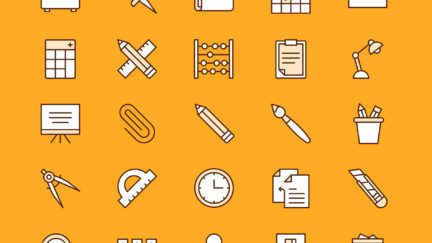How to work with freelance Graphic Designers
We all know that the demand for finding a graphic design freelancer for any given project you may be dealing with is high. The crucial caveat in this however is getting in right in terms of finding the right talent. In 2018, there were over 290,000 graphic design jobs out there and that only accounted for the US.
We’ve all had mixed experiences with graphic design freelancers in the past, and this often comes as result of approaching things in the wrong way from the offset and not being clear in the mutual understandings and expectations from either party. Take a look at some of the below scenarios:
“The colours are completely off from what I had in mind”
“The budget has well exceeded our initial expectations and it took far too long”
“The communication process was quite muddled and we didn’t get what we wanted in the end”
Do any of these sound frustratingly familiar? We’ve all been there, although it doesn’t have to be like this. Oftentimes, a lot of these issues come down to communication, though of course there are wider things to keep in mind.
Within this guide on how to hire (and work with) freelance graphic designers we’ll provide some useful tips to try and mitigate and hopefully avoid these familiar pain points.
How to Successfully Hire and Onboard a Freelance Graphic Designer: The Pre-Hire Phase
The pre-hire phase is a crucial opportunity for all parties to get fully aligned for everything moving forward. We can’t overstate the importance of getting in as much agreement as possible during the pre-hire phase.
It’s certainly easy to waffle on about the importance of this in order to avoid issues further down the line, but what does this encompasses exactly? Here’s a quick checklist of everything you should look to cover during the pre-hire phase of a graphic designer:
- Scope of work. A crucial part of any professional engagement! Here you need to define the length of engagement, deliverables, feedback iterations and detailed overview of the project. This should be outlined and agreed in writing and should be as clear and detailed as possible.
- Communication style. Will you be using Slack, email or Zoom to communicate? How often should you have catch-up meetings? Daily? Weekly? Is there a requirement for client facing in the project? Lay out your expectations on how you’re going to work together here.
- Working tools and environments. Related to communication though more explicit to what platforms you expect your freelance graphic designer to work on. Are they expected to use Photoshop? InDesign? Manipulation? What reporting tools should they use? Are they on Mac or Windows? Will you be sharing stats on Google Sheets?
- Payment details. The million-dollar question. Well maybe not quite that much! It’s a vital at the pre-hire stage to define all things payment-related. Rates (be it daily or project-based), payment frequency (weekly or monthly), and method of payment. Stats show that the average salary for a freelance graphic designer is £250 a day, though this of course varies with experience.
Onboarding Your Freelance Graphic Designer
Once you’ve tied everything up with the pre-hire stage and have chosen the exact freelance graphic designer you want, it’s time to go through the onboarding process in detail. This where you get down to the nitty gritty of the roles and provisions for the job and project at hand.
- The Who’s Who. Is your freelance graphic designer serving as an art director with full creative control over designs or do you or the client (if there is one) need to take the lead on approvals? Are there other people involved in the project that they need to touch base with like copywriters or brand managers?
- It’s all in the brand. Alongside contact details for key team members, it’s also vital to brief in your graphic designer with brand style guides with required colour schemes, typography and logo usage among other things. Are there asset folders where they can work from? Do you have access to a shared drive or stock photo account for image assets?
During the project
Congratulations, you’ve fully onboarded you’re freelance graphic designer! This is definitely the hardest part of the process and following all of the above checklist points in detail should put you on a good starting path for the project at hand. But of course it doesn’t end there…
There are some key things to keep in mind as the process unfolds. No project is the same of course, and although you may have tried your hardest to establish processes and deadlines from the offset, it’s important to keep a flexible mind in case unexpected things come up.
Aside from this, it’s important to keep the below two minds in mind to ensure things are kept on course:
- Keep in touch. Stick to your robust communication standards to enforce all roadblocks are navigating effectively, transparency is maintained and issue are tackled collectively
- Be receptive to change. As much as we try to keep everything straight and plain sailing, projects by their nature can change at the drop of a hat. Goals and KPIs may shift. Deadlines may be brought forward, elements of branding may require change and even budgets may shift. Be receptive to change and adapt to things as best possible.
Getting everything right in the process of hiring and onboarding a freelance graphic designer can be a challenging affair though when things go well it can be incredibly rewarding; not least, avoiding those initial headaches around miscommunication!
If you’re on the look out for a freelance graphic designer, take a lot at the PeoplePerHour design freelance listings and our deep talent pool for your delectation.














